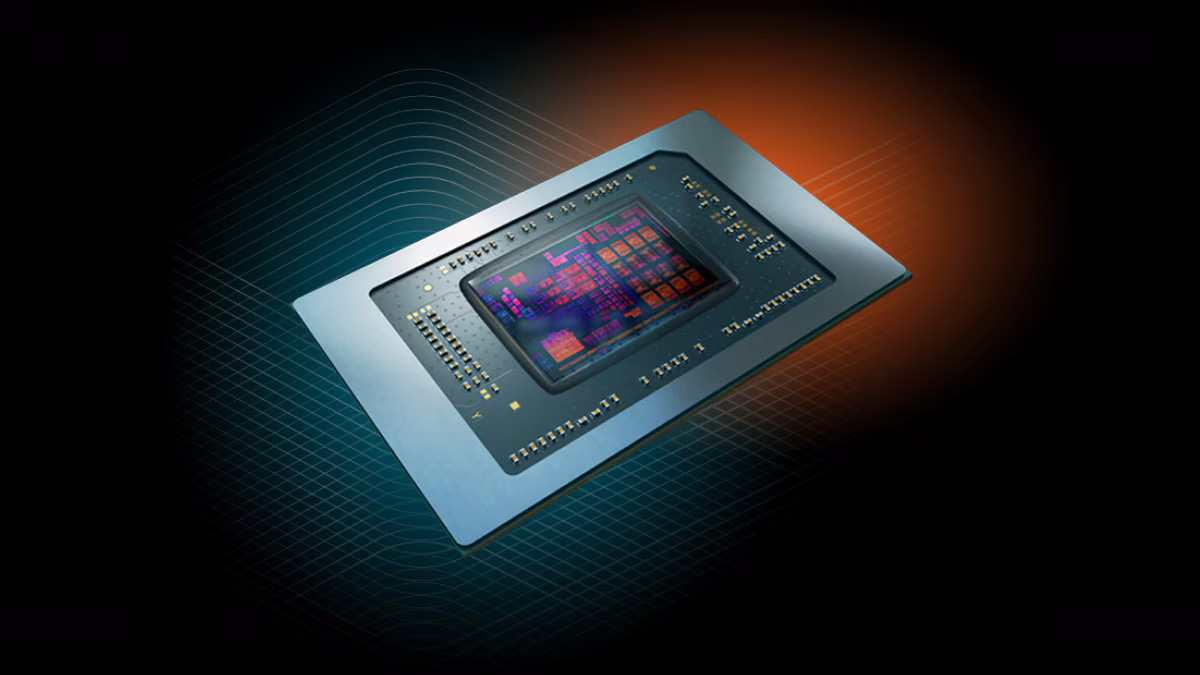AMD's Gorgon Point APU line-up breaks cover — Allegedly aiming for a 2026 launch
Leaked slides suggest this refresh will deliver just a single-digit performance boost over existing Strix Point offerings.

AMD is allegedly planning a successor to its Strix Point lineup of APUs for laptops, codenamed Gorgon Point per JNtechreview (via Harukaze). The reviewer shared several slides on their Naver Cafe channel from the LG Gram X Ryzen launch event that seems to be under embargo, revealing a previously unannounced APU family from AMD that reportedly targets a 2026 launch. There are also talks of a new AI Max series succeeding Strix Halo under the "Medusa" lineup. Even if the slides seem real, it's best to approach them with caution, as AMD has not officially confirmed these products.
Gorgon Point allegedly serves as a drop-in replacement for existing Strix Point designs, supporting the same FP8 package. There aren't many architectural changes, as Gorgon Point seemingly sticks with the same Zen 5/5c CPU cores, an RDNA 3.5-based integrated GPU, and an NPU based on XDNA 2. The entire lineup screams Strix Point Refresh, apart from a new Ryzen AI 3 addition, likely to be reserved for entry-level laptops.
Per the slides, AMD's mobile offerings will continue with Hawk Point (Ryzen 200) for mainstream devices, while on the premium end, Gorgon Point is expected to supersede Strix Point next year. Following a two-year cadence, we anticipate Zen 6 to launch sometime later in 2025. However, the slides mention no Zen 6-based APU (likely to be named Medusa Point) for 2025 or 2026, although we could be reading too much into what's essentially leaked information. As a side note, Intel's competing Panther Lake is slated for release later in 2025 and is expected to feature Cougar Cove and Darkmont cores alongside an integrated GPU based on Xe3 (Celestial).
LG Gram X Ryzen new product launch event- Link is limited accessible- Ryzen AI series is now "Gorgon Point"- Gorgon Point is refresh, 55 TOPS, higher clock- AI Max series will be available in "Medusa" series.- There is no RDNA 4 laptophttps://t.co/RrvOPTbgfE pic.twitter.com/4cWXzL0n2WMarch 25, 2025
Moving over to performance, and AMD's internal projections depict single-digit performance increments versus incumbent Strix Point APUs, if these slides are genuine. With the respective Ryzen AI 300 (Strix Point) APU at 15W as the baseline (100%), we've found that the most impressive wins land at just 5-6%, largely due to the faster clock speeds and improved binning.
It was expected for AMD to target Gorgon Point (Strix Point Refresh) for the mainstream market and a potential Medusa Point for premium notebooks next year, similar to how Ryzen 200 (Hawk Point Refresh) chips recently launched as an entry-level option. However, that doesn't seem to be the case, at least according to this leak.
Furthermore, the source also mentions that the successor to the beastly Strix Halo will be available under the Medusa series. AMD will probably incorporate its then-latest architectures, such as Zen 6 and RDNA 4 or the first iteration of UDNA, if we're lucky, with these chips. Sadly, an expected release window has not been specified, although we could be looking as far off as late 2026 or early 2027.
During a Q&A session with LG and AMD, it was supposedly mentioned that there are no plans to bring RDNA 4 discrete GPUs to laptops. This much was already said by AMD in broad terms previously, where it indicated RDNA 4 desktop GPUs are their first priority. All in all, there are still some gaps in AMD's next-generation mobile portfolio, though we're hopeful that time will bring more clarity.
Get Tom's Hardware's best news and in-depth reviews, straight to your inbox.

Hassam Nasir is a die-hard hardware enthusiast with years of experience as a tech editor and writer, focusing on detailed CPU comparisons and general hardware news. When he’s not working, you’ll find him bending tubes for his ever-evolving custom water-loop gaming rig or benchmarking the latest CPUs and GPUs just for fun.
-
heffeque Medusa Halo will be a fairly big evolution over Strix Halo on the iGPU side, but it'll still be RDNA 3.5 as far as I know.Reply
There won't be RDNA 4 for laptop devices, they'll go directly to UMDA around 2027. -
usertests Gorgon Point appears to be a mix of Strix Point and Krackan SKUs.Reply
At the very bottom is the Ryzen AI 3 quad-core Zen 5 with only 2 CUs of RDNA 3.5. That would be a massive cut even for Kraken, but there's no way it could be a new die like the missing in action "Sonoma Valley" because of the PCIe lanes. So it's probably Krakan.
Another interesting point is how the 12-core and the 8-core get the 10% clocked up NPU, but not the 10-core. Those could be the top Strix Point and Krakling dies respectively, but I don't know if Krack has that many PCIe lanes. The 8-core can probably be dual-sourced from Strix Point dies, although it doesn't mention the big/little split (which can't be 3/5 for Kracker).
I have no idea where the drop off in cache from 22 to 14 MB is coming from, other than 8 MB being disabled for "reasons". The figure is combining L2 + L3, and Krakane 6-cores do have 22 MB L2+L3.
Finally, I hope this refresh is in parallel with Medusa Point and is not pushing it back significantly.
Some of these may use a more advanced node, so it would be interesting to see RDNA 3.5 on two different nodes.heffeque said:Medusa Halo will be a fairly big evolution over Strix Halo on the iGPU side, but it'll still be RDNA 3.5 as far as I know.
There won't be RDNA 4 for laptop devices, they'll go directly to UMDA around 2027.
Strix Point is bandwidth starved, so I hope we see some Infinity Cache on Medusa Point. -
thestryker ReplyFollowing a two-year cadence, we anticipate Zen 6 to launch sometime later in 2025.
This should 2026 then, no?
I'm not sure why anyone thinks that Zen 6 is coming out this year when there's no reason to unless Intel was going to completely dominate everything in the market with PTL (hint: they're not). AMD has followed the 2 year cadence for a while now and Zen 5 launched in 24Q3.
I could see a Strix Halo Zen 6 successor using RDNA4, but all leaks have pointed towards Zen 6 APUs using RDNA 3.5. It makes sense to continue using RDNA 3.5 since memory bandwidth holds these parts back already and there really isn't a way around it without adding silicon. -
usertests Reply
Definitely, even Wikipedia says 2026: https://en.wikipedia.org/wiki/Zen_6thestryker said:This should 2026 then, no?
Now if you check the exact number of months between desktop gens, I think it's usually a bit less than 2 years, like around 18-22 months on average. And there are extra mobile gens thrown in that aren't refreshes. But Gorgon Point looks like a bog standard refresh and there's no reason it can't come out before the end of 2025.
Signs point to Zen 6 + RDNA 3.5 for Medusa Point, possibly with Infinity Cache, and possibly with an "RDNA 3.5+" FP8 enhancement to have full support for FSR4. I'm not sure that Medusa Halo can't use RDNA4 though. But we're still in early 2025 so let them cook and let the leaking continue. I want to know if Sonoma Valley ever sees the light of day. -
Mr Majestyk Reply
If it's still RDNA3.5 how it's going to be a big improvement on the iGPU side. cpu side, sure, being Zen 6 and using 12 core ccd's. I read they are bringing IC to more and more products too.heffeque said:Medusa Halo will be a fairly big evolution over Strix Halo on the iGPU side, but it'll still be RDNA 3.5 as far as I know.
There won't be RDNA 4 for laptop devices, they'll go directly to UMDA around 2027.
Gorgon point sound like a total nothing burger, Medusa point will be out in 2026 (Zen 6 is NOT releasing this year in any form) as well, you'd be insane not to wait. Medusa Halo though would be more likely early 2027 -
usertests Reply
Medusa Point: same 16 CUs on a more advanced process node (Strix Point is N4P), faster LPDDR5X memory support, and hopefully at least 16 MiB of Infinity Cache.Mr Majestyk said:If it's still RDNA3.5 how it's going to be a big improvement on the iGPU side. cpu side, sure, being Zen 6 and using 12 core ccd's. I read they are bringing IC to more and more products too.
Medusa Halo: 48 CUs at the top instead of 40 CUs (+20%), more advanced process node?, LPDDR6 memory support, and possibly a 384-bit bus width option.
AMD's APUs are almost always bandwidth starved, so Infinity Cache arriving in the mainstream APUs could be a game changer. Better power efficiency from a new node is always helpful, especially when these APUs are used at around 10-30 Watts.
The "Halo" APUs are good for two things: LLMs/AI, and replacing or competing with overpriced mobile dGPUs. Until the AI bubble pops, their graphical prowess doesn't actually matter that much. They need more TOPS, more memory, and more bandwidth. Maybe that will be the purpose of an "RDNA3.5+": deliver FSR4 support for APUs, and lots more TOPS for Medusa Halo. -
pcbulk This will be great for cheaper home LLM inferencing with 192GB max ram and 92GB allocated to the igpu. Use Framework or similar to add a PCI slot and used 100Gbps RoCE ethernet card, then make more of those until the cluster can hold your choice of LLM model in gpu memory; ‘get it working and you’re all set with a functional though somewhat sluggish setup.Reply